Karl Pilkington in An Idiot Abroad
Unlocking human potential through martial arts
Karl Pilkington in An Idiot Abroad
This article is intended as a companion piece to The Legion of Extraordinary Dancers series. It will provide additional information on the martial arts themes that frequently appear in The LXD.
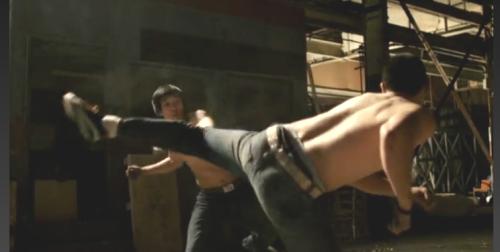
What styles of martial arts are performed on The LXD?
In Episode 2, AntiGravity Heroes, Jimmy and Justin perform a dazzling set with elements of parkour, XMA, and modern wushu. Although the term wushu technically refers to Chinese martial arts in general, the term is most commonly applied these days to theatrical renditions of the arts, tuned for artistic performance rather than for direct combat application.
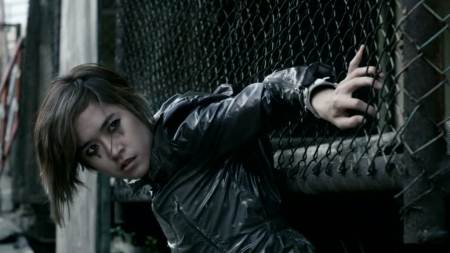
[Yesasia] [IMDB]
I would love to cite Raging Phoenix as the first awesome martial arts film with a female lead. I would love to do that. But its choreographers and writers conspire against me.
Raging Phoenix is the story of a young female rocker (played by Jeeja Yanin) who gets caught up in a ruthless kidnapping ring. Women are abducted off the streets of Thailand, drugged, and taken to a secret laboratory hidden within a Temple of Doom, which is in turn hidden within a metropolitan sewage system. Naturally, the women’s tears are harvested there, to concoct a patent medicine for eccentric billionaires.
Only one force is strong enough to thwart the kidnapper’s plans: a small group of drunken vigilantes who learned to combine Muay Thai boxing with stylish hip-hop dance moves.
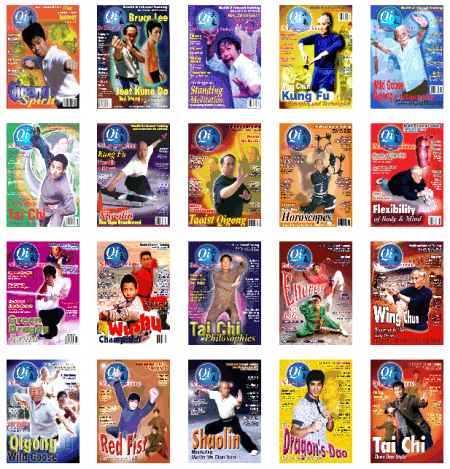
For almost twenty years, Qi Magazine featured original articles on kung fu, qigong, and other facets of Chinese culture, many written specifically by and for martial artists. (Qi Magazine is not to be confused with Qi Journal, which seems more targeted to the Goji berry set.)
Qi Magazine ceased production in early 2009, and publisher Michael Tse has since opened the archives.
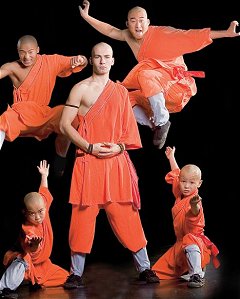
The extraordinary transformation of an ordinary teenager into wannabe monk began nine years ago, when China’s famed Shaolin monks performed their extraordinary show of martial arts and physical feats at London’s Dominion Theatre.
Matthew says, ‘I was 11 and my older brother and cousin took me along to see the show. I was quite interested in martial arts, and I liked watching Jackie Chan films, but nothing could have prepared me for this.
I sat in the audience absolutely mesmerized. The show started just like it still does today, with a candle burning and soft chanting before the monks start demonstrating gentle tai chi moves. Suddenly, it all explodes into wonderful combat sequences and incredible feats of human endurance. The monks walk up stairways made from razor-sharp knives, lie on beds of knives with concrete slabs on top of them, and break metal bars over their own heads–showing how they can overcome pain.
He says, ‘People say that there is often a moment in life where everything changes, and for me, it was watching that one performance. I knew immediately that all I wanted to do in life was go to China and join the Shaolin monks. When I got home, I told Mum and Dad, and I think they assumed it was just a passing phase. But they were wrong…[continued at Daily Mail]
Superstars of Dance, Episode 2
From American Shaolin, a autobiographical tale of Matthew Polly’s intensive training at the modern Shaolin Temple:
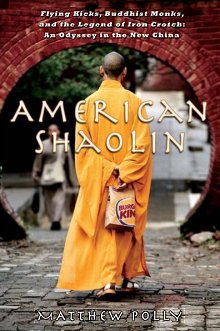
With most TV programming so dull, the boys at Shaolin were kungfu movie freaks, constantly visiting Shaolin’s multiplex to watch the latest blood-spattered Hong Kong releases on VHS. Wanting to undermine the assumption that laowai (non-Chinese outsiders) suck at martial arts, I brought VHS copies of Steven Seagal’s Above the Law, David Carradine’s Kung Fu, and Jean-Claude Van Damme’s Lionheart back to Shaolin after winter vacation.
The monks were used to highly fictionalized portrayals of the Shaolin temple, so they weren’t bothered by the fantasy version of Shaolin in David Carrdine’s Kung Fu. They were, however, shocked by the casting of David Carradine.
“The actor is a laowai,” I said. “He’s pretending to be half-Chinese.”
“That explains why his kungfu is so terrible,” Little Tiger said, as he ducked to the back row to avoid another cuff from monk Deqing.
For the rest of the movie I ignored the slights about Carradine’s kungfu skills, which were admittedly poor. (To be fair, however, he did capture that California New Age, faux-Zen blankness perfectly.) I was waiting for that climactic moment that nearly every American male who was alive in the early 1970s remembers: the scene where Carradine lifts a burning chalice to pass the final Shaolin test, permanently branding a dragon one one forearm and a tiger on the other. I hadn’t seen or heard anything like this legend since my arrival, but I had to know.
“Is the story true?” I asked. “Did that used to be the final test for Shaolin monks?”
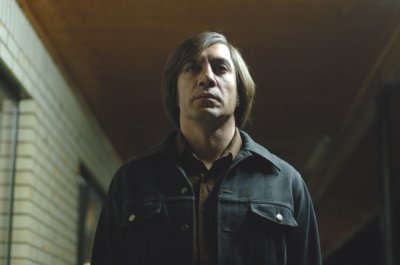
Long before the invention of the blog, and even before the creation of the World Wide Web, there was Usenet. The world’s first electronic social network was established in 1980, and martial artists have been arguing there ever since.
Back in the late 1990s, I started reading the rec.martial-arts newsgroup as most people do, with posts sorted by discussion topic. I soon discovered that, since 90% of the replies on any given topic were rubbish, it made more sense to sort by author instead. Although I abandoned rec-martial arts years ago, due to its low-signal-to-noise ratio, I can still remember the names of some of my favorite writers. At the top of that list, I place the mysterious Ordosclan, also known as Turiyan Gold.
I don’t know Ordosclan’s real name, or his training history. I don’t know how many of his posts were written under the influence of anti-psychotic medication, as his critics claimed. Perhaps not enough of them.

Ordosclan’s martial arts commentaries were sagacious and entertaining, sometimes cryptic and unfortunately brusque. In honor of Black Belt Mama’s Admired Martial Artists Month, I’d like to highlight a few:
In boxing, the boxer keeps his hands up on either side of his face for protection. Punches are thrown from this position. One hand goes out, the other stays by the face for protection.
Why does karate require that you throw a punch from the hip? What is gained by this?
The point of pulling the fists back is to open the chest. Doing so during stance changes makes it harder to use the arms for balance. It’s not for punching. Punches done from the hip are just a training exercise. The Japanese simply copied basic Shaolin from the Chinese. Some teachers try and read ridiculous theories into why something is the way it is: “It’s for qi,” “it’s for jing,” “It trains you to monkey elbow a guy that puts you in a bear hug from behind”, etc.If you start taking things out of MA that are not combat-relevant, you’re left with punches and kicks, knees and headbutts. The simple answer is: it’s not martially oriented. Its just a myth that Shaolin monks are/were “fighting” monks. That’s nonsense. And everyone knows it.
By day, I am a mild-mannered software developer; when darkness falls, I step away from the computer for more vigorous pursuits. During the past few days, I’ve been moonlighting as a private dick. My latest case: to find those responsible for the destruction of the Shaolin Temple village, and bring them to justice.
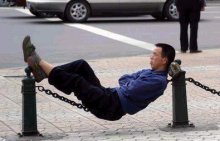
These three movies examine the relevance of martial arts to everyday life. Even though they are all comedies, they may change your perspective on the value and meaning of kung fu.
 Shaolin Soccer [IMDB]
Shaolin Soccer [IMDB]
Stephen Chow’s classic film shows the secret applications of Shaolin wushu: baking, tree trimming, and parallel parking.
In this video clip from the documentary Abbot Hai Teng of Shaolin, the 70-year-old Shaolin monk demonstrates his famous “One Finger Chan” posture.